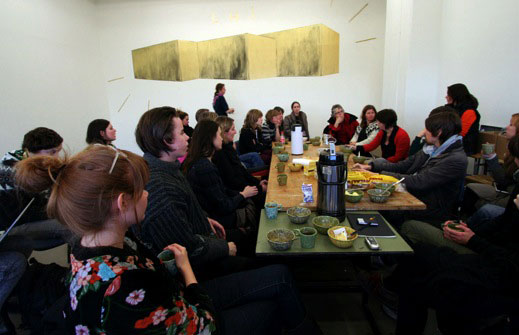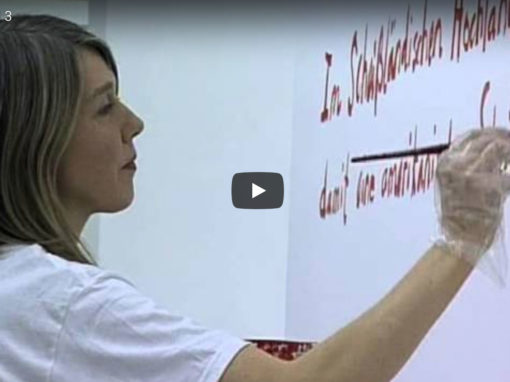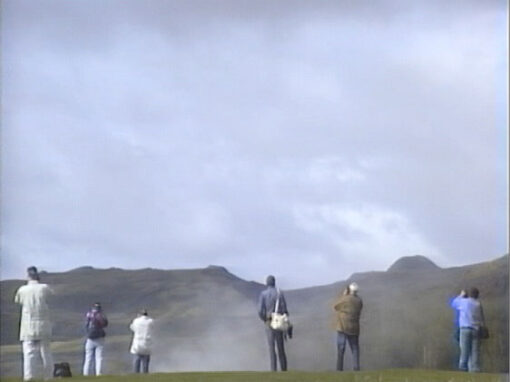Positive growth – negative growth


Society of Fear - Crtitic by Ragna Sigurðardóttir
ASÍ art gallery – Gryfjan/The Pit
26. febrúar 2005 | Menningarblað/Lesbók
From the very start of her career Ósk Vilhjálmsdóttir tackled with the socio-political. For this purpose she has made a conscious effort to highlight objects/subjects that she finds worthwhile and important. One of these concerns the role of the individual in society; another has to do with the importance of social values, e.g. as they manifest themselves in the younger generations of artists, influenced by the preceding ones’. Ideas about how a society could possibly be different or otherwise, was the subject of her memorable installation: “Something else”, in Hlemmur Gallery, in Reykjavík. Now, many years lager the phrase of the former installation resurfaces in Vilhjálmsdóttir’s work but in a very different context. Of course, the phrase “Something else” has many connotations. In the Gryfja exhibition room, at the ASI Gallery, Ósk ponders the existence and life-styles of modern man. Someone has put down his tent in the gallery, and in the surrounding darkness a blood-curdling growl is heard. Either the animal outside the tent is there to protect the human within or threatens to harm him.
Effortlessly, Viljálmsdóttir creates entities that are somehow based on reality, as well as its representations in films. In so doing, the artist creates an atmosphere that grips the spectator.
The sentence written on the wall makes the installation even more effective – the words opens up the work for the spectator, enabling him to read more into the work than meets the eye. The strongest sensation the spectator is left with is, however, speechless horror, a deep-seated fear. A fear of a cruel society, a fear of the darker side of man pure and simple: primal fear, of darkness and viciousness. Surely many things in our society are built on fear? Should fear be maintained or perhaps enhanced? Are we to ward off that which comes from without, the external, the other, including violence, terrorism etc? A powerful police state, one that keeps its citizens under strict surveillance, is not possible without constantly maintaining and generating fear in society.
Since, Viljálmsdóttir has changed Arinstofa (sitting-room with a fire-place) in to a comfortable room to screen films and DVD’s. Children role-playing and dance on the screen, while the background is an ariel photograph of Reykjavík and environs, enabling the spectators to see how the cityscape is constantly spreading in all directions – it is the conquest/settlement of modern man. That which on the surface is free play also shows how society strives to specifically mold the individual for its purposes. One can also sense the early tug of war between the sexes/genders when both children in the film try to take over and direct the play. A hollow canned laughter, from a soap opera, accompanies the film and lends it an eerie hue, drawing forth still darker sides, thus connecting the individual’s life to the reality of mass media – of hyperreality
Ósk Vilhjálmsdóttir has quite clearly come to grips with her own proper imagery and art. She invariably manages to communicate underlying messages to the spectators, although, always with the proviso that in the end it is up to the spectator to interpret the work in question.
Vilhjálmsdóttir’s style is raw, spontaneous, powerful yet personal. Her work is sure to be an inspiration for younger generations of multi-media artists. It usually takes artists considerable time to find the right channel for their work: in this work Vilhjálmsdóttir shows how proficient and adept she has become in her art.
Ragna Sigurðardóttir
projects

























